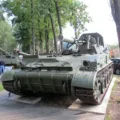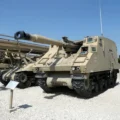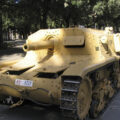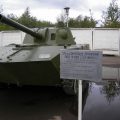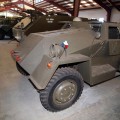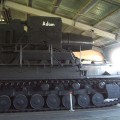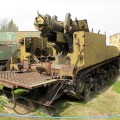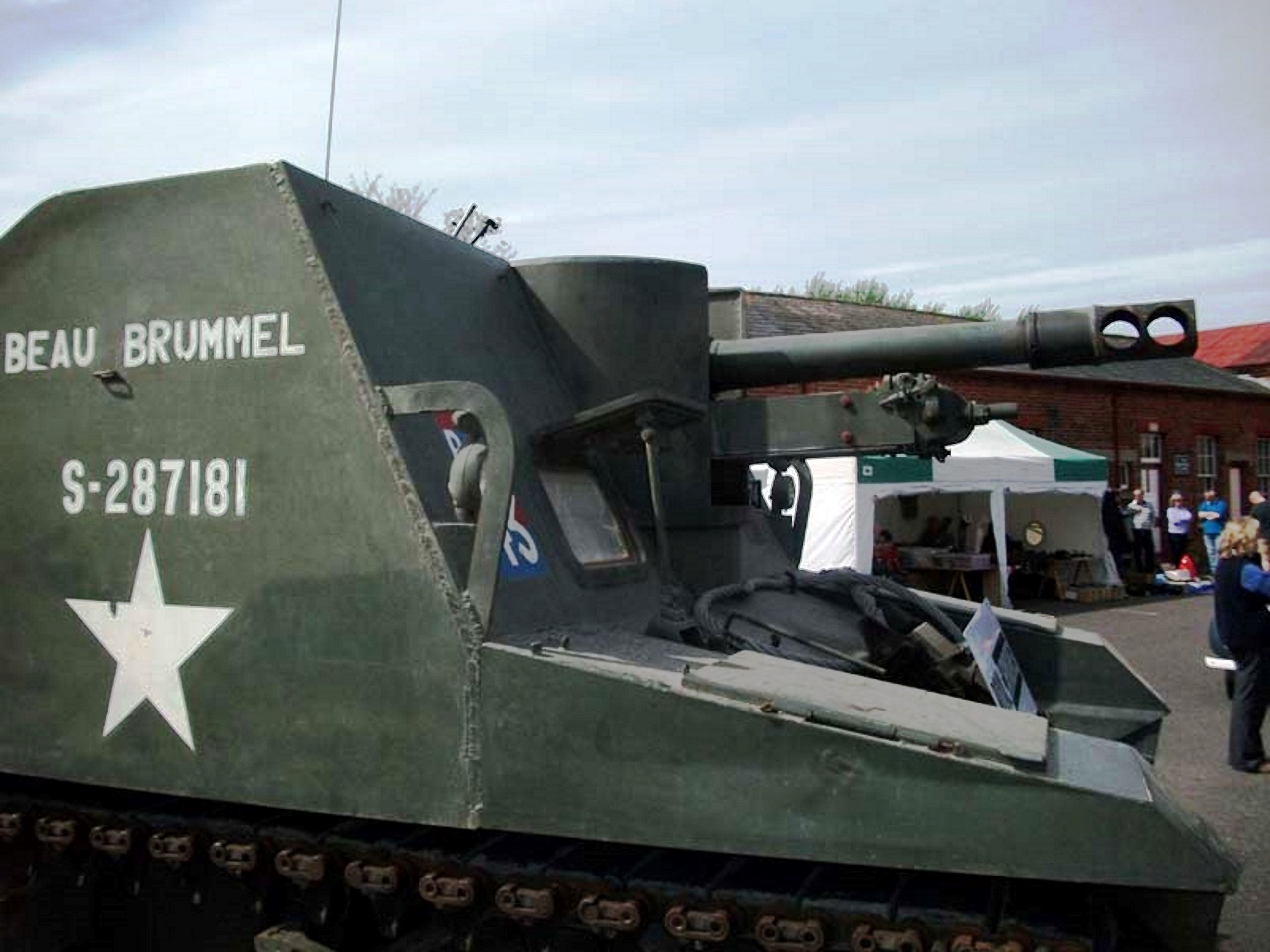
Sexton selvkørende pistol | |
|---|---|
| Land | Canada |
| Type | Selvkørende artilleri |
| I brug | 1943–1956 |
| Bygget | 2150 |
25pdr SP, sporet, Sexton var et selvkørende artillerikøretøj fra Anden Verdenskrig. Det var baseret på canadisk byggede versioner af de amerikanske M3 Lee og M4 Sherman tank chassis, som gik i produktion i Canada som Ram og Grizzly. Da Sherman-produktionen i USA blev udvidet, og forsyningen ikke længere var et problem, blev det i 1943 besluttet at skifte de canadiske produktionslinjer til at producere Sexton for at give den britiske hær en mobil artillerikanon ved hjælp af deres Ordnance QF 25 punds kanonhaubits, som kunne affyre en 87,6 mm (3,45 in) 11,5 kg (25 lb) HE-skal eller en panserbrydende skal. Det fandt anvendelse i den canadiske og britiske hær, såvel som mange andre britiske imperium og tilknyttede styrker. Lige efter krigen blev en række Grizzly og Sextons solgt til Portugal, som brugte dem ind i 1980'erne.
| Sexton Self Propelled Gun – Walk Around | |
|---|---|
| Fotografer | Lukasz Sambor, Paul Adamson |
| Lokalisering | Unknow |
| Billeder | 29 |
| Saxton Walk Around | |
|---|---|
| Fotograf | Unknow |
| Lokalisering | Unknow |
| Billeder | 29 |
| Sexton SPG Walk Around | |
|---|---|
| Fotograf | Darren Baker |
| Lokalisering | Unknow |
| Billeder | 30 |
Se også:
Den Sexton was a Canadian-designed self-propelled artillery vehicle used during World War II. It was based on Canadian-built derivatives of the American M3 Lee and M4 Sherman tank chassis. The Sexton mounted the British 87.6 mm (3.45 in) Ordnance QF 25-pounder gun-howitzer, providing mobile artillery support for the British and Commonwealth armies.
Varianter:
- Sexton I: The first 125 vehicles manufactured, based on the Ram tank hull.
- Sexton II: Featured boxes added to the rear deck to carry batteries and an auxiliary generator. Based on the Grizzly (M4A1 Sherman) hull.
- Sexton GPO (Gun Position Officer): The 25-pounder was removed, and an extra No. 19 Wireless and map tables were added for controlling battery fire.
Specifikationer:
- Masse: 25 long tons (25 t)
- Længde: 20 ft 1 in (6.12 m)
- Bredde: 8 ft 11 in (2.72 m)
- Højde: 8 ft (2.4 m)
- Besætning: 6 (Commander, driver, gunner, gun-layer, loader, wireless operator)
- Rustning: 15–32 mm (0.59–1.26 in)
- Main Armament: Ordnance QF 25-pounder (87.6 mm) Mk II, 105 rounds (mostly HE) carried on board
- Secondary Armament: Two 0.303 (7.7 mm) Bren light machine guns for anti-aircraft defense, 50 30-round magazines
- Motor: Continental R-975 9-cylinder Radial gasoline, 400 hp (298 kW)
- Operational Range: 125 miles+ (200 km)
- Maximum Speed: 25 mph (40 km/h)
Operational Service:
Den Sexton was first used in combat in Italy by the British Eighth Army. It later participated in the invasion of France, the Battle of Normandy, and the campaign in northwest Europe. During the D-Day landings, some Sextons were ordered to fire from their landing craft as they approached the beaches, although the fire was not very accurate. After the war, a number of units were equipped with the Sexton as part of the British Army of the Rhine (BAOR).
The Sexton was generally regarded as a successful project and remained in British service until 1956. Between 1943 and 1945, the Montreal Locomotive Works manufactured 2,150 Sextons for use by Canadian and British forces.
Udsigter: 3381


